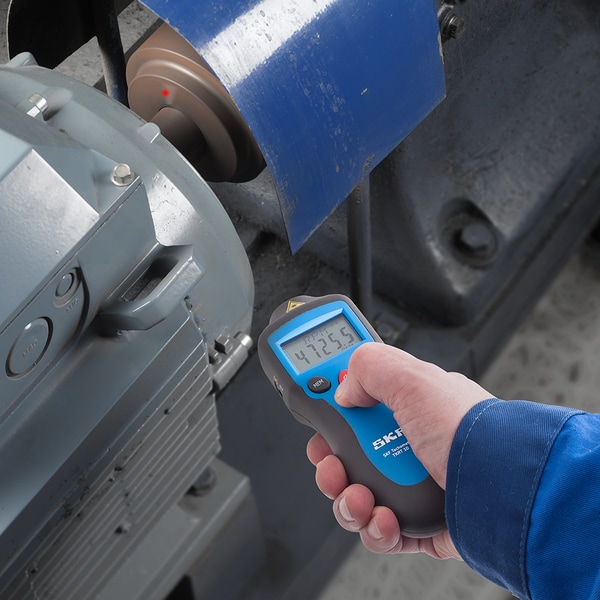Expert Tips for Keeping and Calibrating Your Tachometer
Expert Tips for Keeping and Calibrating Your Tachometer
Blog Article
The Value of a Tachometer in Keeping An Eye On Engine Speed and Performance in Automotive Applications
In the world of vehicle design, the tachometer stands as a crucial instrument in the driver's arsenal, providing a direct home window right into the inner operations of a vehicle's engine. Past its function as a mere scale of changes per min (RPM), the tachometer serves as an essential device for fanatics and specialists alike, supplying real-time understandings into engine performance and wellness. Recognizing the relevance of this device surpasses surface-level monitorings, diving into the elaborate connection in between engine speed, power result, and overall driving experience. As we check out the complex function of the tachometer in vehicle applications, a deeper gratitude for its effect on vehicle dynamics and efficiency starts to arise.
Relevance of Keeping Track Of Engine RPM
Monitoring engine RPM, or revolutions per min, is a crucial aspect of auto maintenance and efficiency assessment. Engine RPM straight correlates with the rate at which the engine's crankshaft rotates, suggesting just how quickly the engine is running.
Additionally, monitoring engine RPM is essential for efficiency examination in auto racing and high-performance vehicles. Keeping optimum RPM degrees is critical for attaining peak power outcome and velocity. Racers typically use tachometers to guarantee they are operating within the excellent RPM array for maximum performance. In summary, keeping track of engine RPM is not only essential for identifying concerns yet also for enhancing engine performance in numerous automotive applications.

Benefits of Real-Time Data
In vehicle applications, real-time information plays an essential function in offering instantaneous insights into the efficiency and problem of the car. By constantly monitoring different specifications such as engine rate, temperature level, fuel usage, and much more, real-time data uses many advantages that contribute to improved effectiveness and safety and security when driving.
Furthermore, real-time data promotes efficiency optimization by providing instant comments on driving practices and engine efficiency. Drivers can adjust their behavior in real-time based on this information to achieve much better fuel economic climate and extend the life expectancy of their car.

Furthermore, real-time data plays a vital function in modern-day auto diagnostics, allowing specialists to quickly detect and attend to breakdowns. This results in reduced downtime, lower maintenance expenses, and eventually, boosted total vehicle reliability and longevity (tachometer). By taking advantage of the power of real-time information, vehicle stakeholders can make enlightened decisions that positively affect both the performance and longevity of the automobile
Effect On Equipment Shifts
The tachometer plays an essential function in maximizing gear shifts by offering real-time engine speed information to the motorist. When approaching the redline on the tachometer, it indicates the motorist to upshift to prevent over-revving the engine click for more info and causing prospective damages.
In addition, the tachometer aids in accomplishing smoother gear changes, particularly in hands-on transmissions. By keeping an eye on engine speed, motorists can perform gear reference changes at the ideal RPM variety, reducing snagging movements and lessening endure the transmission elements. This accuracy on duty changes not only boosts driving convenience but additionally contributes to sustain efficiency.
Enhancing Fuel Effectiveness
Provided the important duty the tachometer plays in enhancing equipment changes for efficiency and engine health and wellness, it straight adds to taking full advantage of fuel performance in vehicle applications. By supplying real-time responses on engine speed, the tachometer helps vehicle drivers in preserving the most reliable RPM variety for fuel economic climate. When chauffeurs consistently keep an eye on the tachometer and adjust their motoring habits appropriately, they can stay clear of unnecessary gas consumption created by over-revving or carrying the engine.
Additionally, the tachometer assists chauffeurs determine the most fuel-efficient gear to be in at any provided moment, preventing the engine from functioning more difficult than required. This is specifically important throughout velocity and browse around this site travelling, where remaining in the right gear can substantially impact fuel performance. Furthermore, the tachometer can signal motorists to potential mechanical problems that could be adversely affecting fuel economy, such as a sliding clutch or a clogged up air filter. To conclude, the tachometer acts as a beneficial tool in boosting gas effectiveness by advertising optimum driving routines and determining locations for improvement in the car's efficiency.

Making Best Use Of Engine Long Life
The tachometer's role in keeping an eye on engine rate and performance is crucial in ensuring the longevity of vehicle engines. Keeping an eye on the tachometer permits chauffeurs to stay within the suggested RPM array for their lorry, stopping unneeded pressure on the engine and extending its life expectancy.

Verdict
In verdict, the tachometer plays an essential function in checking engine rate and performance in vehicle applications. By giving real-time information on RPM, it permits efficient gear shifts, enhanced fuel effectiveness, and made the most of engine longevity. This device is crucial for maintaining ideal engine performance and ensuring the overall functionality of a vehicle.
Report this page